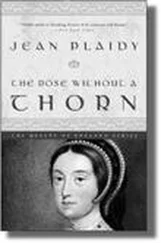Henry Bell - Life of Mary Queen of Scots, Volume 1 (of 2)
Здесь есть возможность читать онлайн «Henry Bell - Life of Mary Queen of Scots, Volume 1 (of 2)» — ознакомительный отрывок электронной книги совершенно бесплатно, а после прочтения отрывка купить полную версию. В некоторых случаях можно слушать аудио, скачать через торрент в формате fb2 и присутствует краткое содержание. Жанр: foreign_antique, foreign_prose, на английском языке. Описание произведения, (предисловие) а так же отзывы посетителей доступны на портале библиотеки ЛибКат.
- Название:Life of Mary Queen of Scots, Volume 1 (of 2)
- Автор:
- Жанр:
- Год:неизвестен
- ISBN:нет данных
- Рейтинг книги:5 / 5. Голосов: 1
-
Избранное:Добавить в избранное
- Отзывы:
-
Ваша оценка:
- 100
- 1
- 2
- 3
- 4
- 5
Life of Mary Queen of Scots, Volume 1 (of 2): краткое содержание, описание и аннотация
Предлагаем к чтению аннотацию, описание, краткое содержание или предисловие (зависит от того, что написал сам автор книги «Life of Mary Queen of Scots, Volume 1 (of 2)»). Если вы не нашли необходимую информацию о книге — напишите в комментариях, мы постараемся отыскать её.
Life of Mary Queen of Scots, Volume 1 (of 2) — читать онлайн ознакомительный отрывок
Ниже представлен текст книги, разбитый по страницам. Система сохранения места последней прочитанной страницы, позволяет с удобством читать онлайн бесплатно книгу «Life of Mary Queen of Scots, Volume 1 (of 2)», без необходимости каждый раз заново искать на чём Вы остановились. Поставьте закладку, и сможете в любой момент перейти на страницу, на которой закончили чтение.
Интервал:
Закладка:
A belief was at this time prevalent at the court of France, that the Prior of St Andrews, who was the principal military leader of the Congregation, had views of a treasonable nature even upon the crown itself, and that he hoped the flaw in his legitimacy might be forgotten, in consideration of his godly exertions in support of the true faith. A new reinforcement of French soldiers arrived at Leith, which they fortified; and the French ambassador was commanded to inform the Prior, that the King, his master, would rather spend the crown of France, than not be revenged of the seditious persons in Scotland.
The civil war now raged with increased bitterness, and with various success, but without any decisive advantage on either side for some time. The Reformers applied for assistance to Queen Elizabeth, who favoured their cause for various reasons, and would, no doubt, much rather have seen Murray in possession of the Scottish crown, than her own personal rival, Mary. The Congregation having found it impossible, by their own efforts, to drive the French out of Leith, Elizabeth, in the beginning of the year 1560, fitted out a powerful fleet, which, to the astonishment of the Queen Regent and her French allies, sailed up the Firth of Forth, and anchored in the Roads, before even the purpose for which it had come was known. A treaty was soon afterwards concluded at Berwick between the Lords of the Congregation and Elizabeth’s Commissioner, the Duke of Norfolk, by which it was agreed, on the part of the former, that no alliance should ever be entered into by them with France; and on that of the latter, that an English army should march into Scotland early in spring, for the purpose of aiding in the expulsion of the French troops.
This army came at the time appointed, and was soon joined by the forces of the Reformers. The allies marched directly for Leith, which they invested without loss of time. The siege was conducted with great spirit, but the town was very resolutely defended by the French. So much determination was displayed upon both sides, that it is difficult to say how the matter might have ended, had not the death of the Queen Regent, which took place at this juncture, changed materially the whole aspect of affairs. She had been ill for some time, and during her sickness resided in the Castle of Edinburgh. Perceiving that her end was approaching, she requested an interview with some of the leaders of the Congregation. The Duke of Chatelherault, the Prior of St Andrews, or the Lord James, as he was commonly called, and others, waited upon her in her sick-chamber. She expressed to them her sincere grief for the troubles which existed in the country, and advised that both the English and French troops should be sent home. She entreated that they would reverence and obey their native and lawful sovereign, her daughter Mary. She told them how deeply attached she was to Scotland and its interests, although by birth a Frenchwoman; and at the conclusion, she burst into tears, kissing the nobles one by one, and asking pardon of all whom she had in any way offended. The day after this interview, Mary of Guise died. Her many excellent qualities were long remembered in Scotland; for even those who could not love, respected her. In private life, if this term can be used with propriety when speaking of a Queen, she appears to have been most deservedly esteemed. She set an example to all her maids of honour, of piety, modesty, and becoming gravity of deportment; she was exceedingly charitable to the poor; and had she fallen upon better days, her life would have been a happier one for herself, and her memory more generally prized by posterity. Her body was carried over to France, and buried in the Benedictine Monastery at Rheims. 8 8 It is worth while observing with what a total want of all Christian charity Knox speaks of the death of Mary of Guise. Alluding to her burial, he says: – “The question was moved of her burial: the preachers boldly gainstood that any superstitious rites should be used within that realm, which God of his mercy had begun to purge; and so was she clapped in a coffin of lead, and kept in the Castle from the 9th of June until the 19th of October, when she, by Pinyours, was carried to a ship, and so carried to France. What pomp was used there, we neither hear nor yet regard; but in it we see that she, that delighted that others lay without burial, got it neither so soon as she herself (if she had been of the counsel in her life) would have required it, neither yet so honourable in this realm as sometimes she looked for. It may perchance be a pronosticon, that the Guisean blood cannot have any rest within this realm.” Elsewhere he says – “Within few days after, began her belly and loathsome legs to swell, and so continued till that God did execute his judgment upon her.” And again – “God, for his mercy’s sake, rid us of the rest of the Guisean blood. Amen.” As Keith remarks, it was not by this spirit that the Apostles converted the world. – Keith, p. 129.
Very soon after the death of the Queen Regent, Commissioners arrived both from France and England, with full powers to conclude a treaty of peace between the three countries. By the loss of their sister, the Princes of Lorraine had been deprived of their chief support in Scotland, and, being actively engaged in schemes of ambition nearer home, they found it necessary to conciliate, as they best could, the predominating party there. The important treaty of Edinburgh, which will be mentioned frequently hereafter, was concluded on the 14th of June 1560. It was signed on the part of France by the two plenipotentiaries, Monluc, Bishop of Valence, and the Sieur Derandon, reckoned two of the best diplomatists of the day; and, on the part of England, by Wotton, Dean of Canterbury, and Elizabeth’s prime minister, Cecil, one of the ablest men of that or any age. The interests of the Congregation were intrusted principally to the Lord James. In consequence of this treaty, the French troops were immediately withdrawn. The fortifications of Leith and Dunbar were destroyed, and a Parliament was held, whose acts were to be considered as valid as if it had been called by the express commands of the Queen. In that Parliament, the adherents of the Congregation were found greatly to out-number their adversaries. An act of oblivion and indemnity was passed for all that had taken place within the two preceding years; and, for the first time, the Catholics, awed into silence, submitted to every thing which the Reformers proposed. A new Confession of Faith was sanctioned; the jurisdiction of the Ecclesiastical Courts was abolished; and the exercise of worship, according to the rites of the Romish Church, was prohibited under severe penalties – a third act of disobedience being declared capital.
Thus, the Reformation finally triumphed in Scotland. Though as yet only in its infancy, and still exposed to many perils, it was nevertheless established on a comparatively firm and constitutional basis. The Catholics, it is true, aware of the school in which Mary had been educated, were far from having given up all hope of retrieving their circumstances; and they waited for her return with the utmost impatience and anxiety. But they ought to have known, that whatever might have been Mary’s wishes, their reign was over in Scotland. A Sovereign may coerce the bodies, but he can never possess a despotic sway over the minds of his subjects. The people had now begun to think for themselves; and a belief in the mere mummeries of a fantastic system of Christianity, and of the efficacy of miracles performed by blocks of wood and stone, was never again to form a portion of their faith. A brief account of one of the last, and not least ludicrous attempts which the Popish clergy made to support their sinking cause, will form a not improper conclusion to this chapter.
Читать дальшеИнтервал:
Закладка:
Похожие книги на «Life of Mary Queen of Scots, Volume 1 (of 2)»
Представляем Вашему вниманию похожие книги на «Life of Mary Queen of Scots, Volume 1 (of 2)» списком для выбора. Мы отобрали схожую по названию и смыслу литературу в надежде предоставить читателям больше вариантов отыскать новые, интересные, ещё непрочитанные произведения.
Обсуждение, отзывы о книге «Life of Mary Queen of Scots, Volume 1 (of 2)» и просто собственные мнения читателей. Оставьте ваши комментарии, напишите, что Вы думаете о произведении, его смысле или главных героях. Укажите что конкретно понравилось, а что нет, и почему Вы так считаете.












